Home: Perissodactyls
This website looks at the evolution of a group of herbivorous mammals called the perissodactyls.
The living members of this group will probably be very familiar to you; horses, rhinos, and tapirs. But its extinct members include horses the size of a small dog, horse-like creatures with huge claws instead of hooves, and the largest land mammal that ever lived. The collections of the American Museum of Natural History contain over 60,000 fossils of these animals, from their first appearance in the ancient rainforests of North America 55 million years ago to ice age species that were familiar to the first human inhabitants of the continents. These specimens were collected across the globe, from ancient riverbeds in Alaska, to the high plains of Nebraska and the Dakotas, and the deserts of Central Asia. On this website you’ll be able to explore more about the different types of perissodactyl and how they evolved. You’ll discover how that evolution was shaped by the changing environment of the last 55 million years. And you’ll also see how scientists use collections like those of AMNH to study the evolution and ecology of long-extinct animals and what those studies tell us about the challenges we face from climate change today.
Concepts
Explore some of the underlying concepts behind paleontology. How do scientists name new fossils? How do they determine the evolutionary relationships between different types of animal? And what are the timescales involved in evolution?
Environment
55 million years ago, the world was a “greenhouse,” with no polar icecaps and vast rainforests blanketing its surface. Find out how our planet’s climate has changed since then, the effects that this had on plants and animals, including the perissodactyls, and what this tells us about climate change today.
Evolution
Discover the different groups of living and extinct perissodactyls. Find out how they are related, how they lived, and see examples of fossil perissodactyl from the AMNH collections.
Evidence
How do we know what we know about perissodactyl evolution? Discover how scientists find and excavate fossils, how they bring them back to the Museum, and what we do with them once they get there. What do we do to look after them and how do scientists use them to study evolution?
 With funding from the National Science Foundation, the American Museum of Natural History has spent three years on a major upgrade to its collection of fossil perissodactyls. Find out more about this project here.
With funding from the National Science Foundation, the American Museum of Natural History has spent three years on a major upgrade to its collection of fossil perissodactyls. Find out more about this project here.
Grant NSF DBI-0545155
Content for the site was written by Dr. Christopher A. Norris, Dr. Matt Mihlbachler, Dr. Luke Holbrook, Mick Ellison, Benjamin Caraballo and Joseph Andrews.
Many of the images on this site were contributed by Carl Buell.
Teaching activites were generated by Benjamin Caraballo, Joseph Andrews, and Michael Holmes.
Editing design and images by Lindsay Jurgielewicz and Carlisle Brigham.

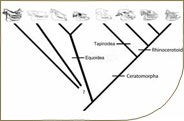
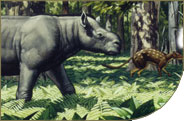
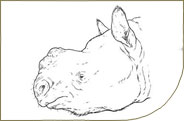
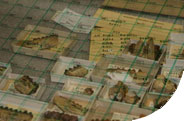

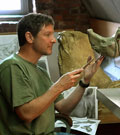


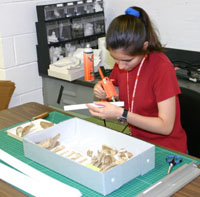 What's it like working in a museum collection? AMNH employs teams of volunteers and student interns to work on projects in the fossil mammal collections, including the recent Perissodactyl Project. Find out more about their experiences and what’s involved in a museum career by reading the project blog,
What's it like working in a museum collection? AMNH employs teams of volunteers and student interns to work on projects in the fossil mammal collections, including the recent Perissodactyl Project. Find out more about their experiences and what’s involved in a museum career by reading the project blog,